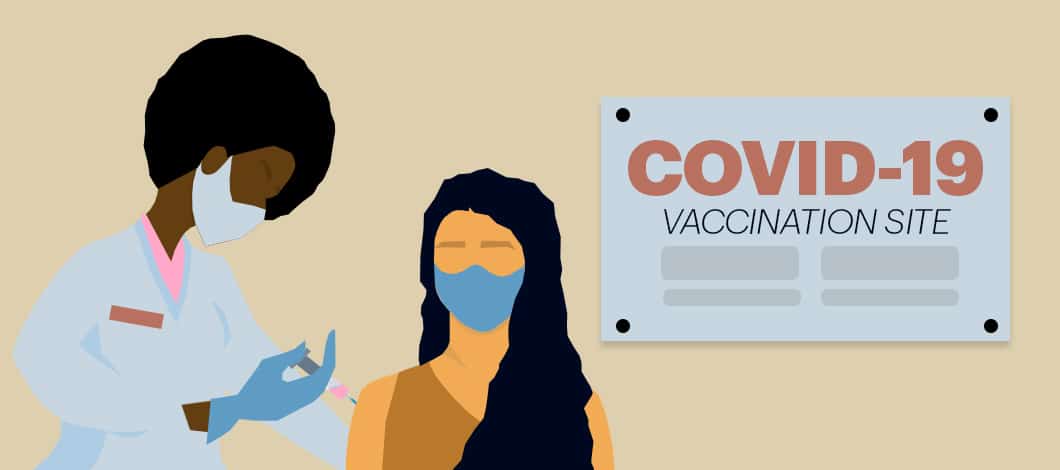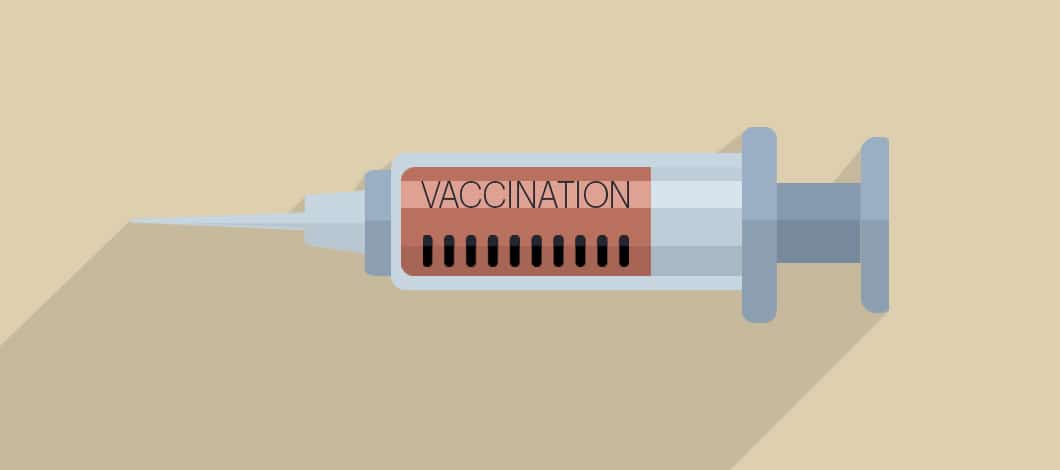Eligible employers can claim a COVID tax credit by providing paid leave for vaccinations.
We’ll cover:
- What the credit is
- How much you can claim
- Who’s eligible
- Which type of leave qualifies
- How you can claim your credit
Determine whether you’re eligible to receive refundable tax credits and to calculate the amount of your credit.
What Is the COVID-19 Vaccination Paid Leave Tax Credit?
The COVID vaccination tax credit is authorized under the American Rescue Plan Act of 2021 (ARP), passed in March 2021. The ARP includes a range of stimulus provisions intended to accelerate economic recovery from the effects of the pandemic. These provisions include tax credits for some employers who provide certain types of paid sick leave and family leave.
The paid leave tax credit provisions of the ARP apply to some small and midsize employers who provide paid leave for employees receiving COVID vaccinations, according to an Internal Revenue Service (IRS) announcement released on April 21, 2021. Details about tax relief for employees who receive paid leave for vaccinations are laid out in a fact sheet released with the April 21 announcement.
General Details
Eligible employers can claim the credit for paid time off related to receiving vaccinations or recovering from vaccinations.
-
For Example
If an employer gave an employee a full day of paid leave to receive a vaccination, a full day of that employee’s wages could be claimed as a tax credit. Paid time off to recover from the effects of vaccination could also be claimed.
For instance, if an employee is running a fever after receiving a vaccination and requests paid time off while they recover, this would qualify for a tax credit.
Credits are claimed against employer shares of Medicare taxes. They are refundable, meaning employers are entitled to full credit even if paid leave expenses exceed Medicare obligations. Employers who anticipate claiming a COVID payroll tax credit can keep taxes they would have paid otherwise.
Credit for paid sick leave is limited to 2 weeks (80 hours) of pay, with a cap of $511 a day or $5,110 overall, at 100% of the employee’s regular pay rate. Credit for paid family leave is limited to 12 weeks, with a cap of $200 per day or $12,000 overall, at two-thirds of regular pay rate.
Employers with fewer than 500 employees, including self-employed individuals, and certain government employers can claim the tax credit. The credit can be claimed for wages for paid leave taken by employees who cannot work from the office or remotely because of reasons related to COVID-19, including taking time off to receive vaccinations or recover from vaccinations.

How Much Can Employers Claim for Tax Credits?
Limits on tax credits differ for paid sick leave and paid family leave:
- For paid sick leave related to COVID-19, including vaccinations, employers can claim tax credits for up to 2 weeks (80 hours) of wages, subject to a limit of $511 a day or $5,100 overall, calculated at 100% of the employee’s regular pay
- For paid family leave, employers can claim up to 12 weeks of wages, subject to a limit of $200 a day or $12,000 overall, calculated at two-thirds of the employee’s regular pay
Credit amounts can be increased by:
- Allocable health-care plan expenses
- Contributions for some collectively bargained benefits
Credit amounts also can be increased for the employer’s share of Medicare and Social Security taxes. This is subject to daily and total limits.
Which Employers Are Eligible for the COVID Leave Tax Credit?
Employers with fewer than 500 employees are eligible.
This includes:
- Nonprofits
- Some governmental organizations, not including the federal government or any agencies or instrumentalities of the federal government which aren’t described in Internal Revenue Code Section 501(c)(1)
COVID-19 tax credits for individuals are also available for self-employed business owners.
To be eligible, employers must be claiming credit for leave paid between April 1, 2021, and Sept. 30, 2021.
Follow Other Applicable Regulations to Maintain Eligibility
Labor legal consultation firm Fisher Phillips advises employers seeking COVID-19 vaccination tax credits should be sure to comply with all provisions of the Families First Coronavirus Response Act (FFCRA), originally enacted in 2020 to govern pandemic-related paid sick leave and expanded and medical leave and amended since its original passage.
To be eligible for tax credits, employers must provide paid leave for certain specified reasons related to the pandemic, such as awaiting the results of being tested for COVID-19. If employers only provide paid leave for vaccinations but not for other reasons covered by the FFCRA, they may risk forfeiting eligibility for tax credits.
Which Types of Paid Leave and Family Leave Qualify?
Eligible employers can claim tax credits for paid leave for time off taken by employees who can’t work for reasons related to the pandemic, including but not limited to vaccinations. This includes time off taken by employees who work remotely, such as employees who work from home.
With respect to vaccinations, credits can be claimed for leave taken:
- To receive vaccinations
- To recover from any illness, injury, disability or condition related to vaccinations
Note the FFCRA allows tax credits for reasons besides those directly related to vaccinations. For instance, an employer could claim a tax credit for paid time off for employees who are waiting to receive results from COVID-19 tests.
What Time Period Is Covered by the Tax Credit?
The tax credit applies to sick leave and family leave paid for by employers between April 1, 2021, and Sept. 30, 2021.

Are Employers Required to Pay for COVID Leave?
Federal law doesn’t require employers to provide paid leave for COVID vaccinations. Under the previous version of the FFCRA, employers were required to provide paid sick leave and paid family leave under certain conditions related to the pandemic.
However, this requirement expired on Dec. 31, 2020. Beyond this date, employers aren’t obligated to continue providing paid leave for reasons related to the pandemic. However, employers who voluntarily do so can continue to claim tax credits under updated FFCRA guidelines.
Note that this only applies to federal law. Some state and local governments have passed laws requiring employers to continue providing pandemic-related paid sick leave beyond the expiration of the FFCRA requirement.
Be sure to check which laws apply to your location. The Society for Human Resource Management provides periodic updates on state and local legislation in this area. Check directly with your state or local government or with a business lawyer or human resources consultant.
How Do Employers Claim COVID Paid Leave Tax Credits?
Eligible employers should report their total paid sick leave and family leave on their federal tax return each quarter. For most employers, this will go on Form 941, Employer’s Federal Tax Return. Employers who plan to claim tax credits can keep the amount they would have paid normally. The instructions for the Form 941 explain how to record reduced quarterly liabilities.
Employers who don’t have enough funds set aside to cover paid leave wages may request an advance on their tax credits by filing a Form 7200, Advance Payment of Employer Credits Due to COVID-19. The employer will then record the amount advanced when they file their quarterly federal tax return for the applicable quarter.
Claiming a Vaccination Tax Credit as a Self-Employed Individual
Self-employed individuals may follow a similar procedure when reporting their individual federal income taxes using a Form 1040, U.S. Federal Income Tax Return. When filing your Form 1040, attach a Form 7202, Credits for Sick Leave and Family Leave for Certain Self-Employed Individuals. If you and your spouse are both self-employed and you both want to claim a credit, you should each file a Form 7202.
Attorney Stephen Fishman advises that if you claim a vaccination credit as a self-employed individual, you don’t need a doctor’s statement, but you should create a preserve a record documenting the date you received your vaccine and other dates you were unable to work, stating your inability to work on those days. Keep this record with your tax records for at least 4 years.
Whether you’re an employer or a self-employed, talk to your legal counsel and your tax adviser before claiming tax credits.
Save Money by Claiming Your COVID Vaccination Tax Credits
If you have up to 500 employees or you’re self-employed, you may be eligible to claim tax credits for paid leave related to COVID-19 vaccinations. If eligible, you can claim up to 2 weeks of paid sick leave or up to 12 weeks of paid family leave. Credits come out of Medicare tax obligations and are refundable.
You can claim credits for leave paid for between April 1, 2021, and Sept. 30, 2021. Claim the credit on your federal quarterly tax return, or if self-employed, on your individual income tax return. If you don’t have enough set aside to cover paid leave wages, don’t worry. You can apply for an advance on your tax credit.










